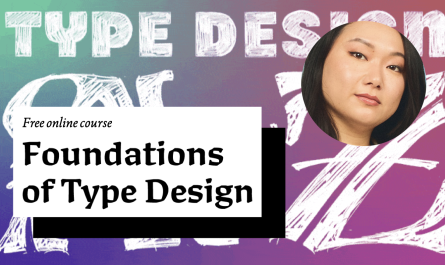1) To tell the boss that the corporate typeface is ugly.
2) To be able to «play with fonts» afterwards.
3) To get a glimplse of the topic (it’s like tourists come to the red light district in Amsterdam just to say «check»)
4) To have reasonable arguments in a conversation like «this font is bad». This is similar to p.1 (but p.1 is usually because of boastfulness), and here is more about finding the truth.
5) To make it less stressful when you create a new document in MS Word.
6) To understand why Comic Sens is a terrible typeface…
Below is what you can really learn about typefaces
1) There’s no such thing as a bad typeface. There are bad typefaces for your task.
2) The best font is the one that is in the brand book. Even, if you don’t like this brand book. You can call yourself Peter, saying it’s better than Peterfrog by your passport. But until you change your passport — Peterfrog, alas, is the best name for border guards.
3) Typefaces convey emotion (mood)
4) Typefaces are all about functionality. The whole history of typefaces is about making a font that will work better than the others in some way
5) Functionality varies: readable or not, narrow or wide, cold or warm, to stand out or to be quiet and etc.
6) There are bad and good Cyrillic letters. For example, in Arial, Times New Roman, Open Sans or Roboto, the Cyrillic alphabet is bad. Verdana and Georgia have good Cyrillic.
7) The quality of a type is determined by the amount of good design made with this typeface.
8) There are no «too many fonts». There is only — see p.1.
9) Rules like «no more than 2 fonts» or «fonts from the same family» — have been invented for those who know nothing of typefaces. It doesn’t mean that these rules are bad, it means that you should follow them if you know nothing about typefaces.
10) There are a lot more typeface classes than serif and sans-serif.
11) You don’t have to know them all (just like typefaces names), but it’s useful to know the main classes and why they have been invented in the first place. This knowledge helps you to «play with fonts» systematically rather than by random search.
12) Font affects the perceived credibility, complexity of a task and a bunch of other factors that are peculiar to perceive only by a human. Only a human after reading a sign with a certain font, appreciates more the taste of food in a restaurant.
13) You do not always need a new or different typeface, sometimes you just need a good template. But if the template is fine, and it stills looks ugly anyway, the change of typeface will probably help.
14) And no, Hitler did not like Blackletter types, this is their national letter, which remained in printed press during his time in power even though he tried to switch people to Antique typefaces.
15) And yes, typefaces cost money. It’s not always exactly what the publisher in the retail market wants for them, but it’s a complex and long work that has to be paid for (until AI learns how to design types).
16) Yes, most typefaces publishers are extremely not client-oriented in terms of price, pre-testing and conditions of a typefaces use. Why so far all typefaces are not sold via a subscription with a mandatory demo test before buying — it is not clear to me.
17) And yes, this (p.15) is changing (thanks to such platforms as FontStand and similar), but slowly.
— In Russian —
Зачем люди хотят «разобраться» в шрифтах?
1) Чтобы сказать боссу, что фирменный шрифт плохой
2) Чтобы потом «играться»
3) Чтобы прикоснуться к теме (это как туристы приходят в квартал красных фонарей не действа ради, а чтобы поставить галочку)
4) Чтобы иметь разумные аргументы в диалоге «этот шрифт плохой». Это похоже на п.1 (но п.1 обычно из тщеславия), а тут больше про поиск истины
5) Чтобы меньше стрессовать, когда создаешь новый док в Word-е
6) Чтобы понять, почему Комик Санс — ужасный шрифт
Реально, что можно узнать
- Не бывает плохого шрифта.
Бывает плохой выбор шрифта под задачу - Лучший шрифт — тот, который в брендбуке. Даже,
если этот брендбук вам не нравиться. Можно называть себя Ярославом, заявляя, что это лучше, чем Тумбочкослав
по паспорту. Но пока вы не поменяете паспорт —
Тумбочкослав, увы, лучшее имя при прохождении границы - Шрифты передают эмоцию (настроение)
- Шрифты в первую очередь про функциональность.
Вся история шрифтов про то, чтобы сделать такой
шрифт, который будет работать лучше, чем другие,
в каком-то контексте. Именно так у нас появились пробелы (до Карла Великого их не было), а затем и загл - Функциональность бывает разная: читаемый или нет, узкий или широкий, холодный или теплый, выделяю-щийся или серый и т.д.
- Бывает плохая и хорошая кириллица. Например, в Arial, Times New Roman, Open Sans или Roboto — плохая кириллица. В Verdana и Georgia — хорошая.
- Качество шрифта определяется количеством хорошего дизайна, сделанного при помощи этого шрифта.
- Не бывает «слишком много шрифтов». Бывает — см. п.1
- Правила типа «не больше 2-х шрифтов» или
«шрифты из одного семейства» — придуманы для тех,
кто не разбирается в шрифтах. Это не значит, что эти правила плохие — это значит, что им стоит следовать, если вы не разбираетесь. - Видов шрифтов сильно больше, чем с засечкам и без. Знать их все (как и имена шрифтов) необязательно, но полезно знать основные виды и из-за чего они появились. Это знание помогает «играться» шрифтами системно, а не случайным перебором.
- Шрифт влияет на воспринимаемую убедительность, сложность и еще кучу других факторов, которые свойственно воспринимать лишь человеку. Только человек после чтения вывески определенным шрифтом, более высоко оценивает вкус еды в ресторане.
- Не всегда нужен новый или другой шрифт, иногда нужен нормальный шаблон. Но, если шаблон нормальный, а выглядит все равно «колхозно», то скорей всего смена шрифта поможет.
- И нет, Гитлер не любил готические шрифты, это их национальное письмо, которое как он не старался, но все же осталось в печати за время его власти
- И да, шрифты стоят денег. Не всегда ровно тех, которые хочет за них издатель на розничном рынке, но это сложный и долгий труд (пока AI не научился), который должен быть оплачен.
- Да, большинство шрифтовых издателей крайне неклиентоориентированы в вопросах цены, предварительного тестирования и условий использования шрифта. Почему до сих пор все шрифты не продаются по подписке с обязательным демо-тестом до покупки — непонятно.
- И да, это (п.15) меняется, благодаря таким платформам, как FontStand и им подобным, но медленно.


